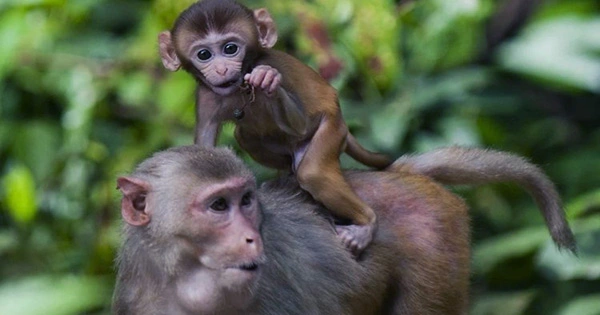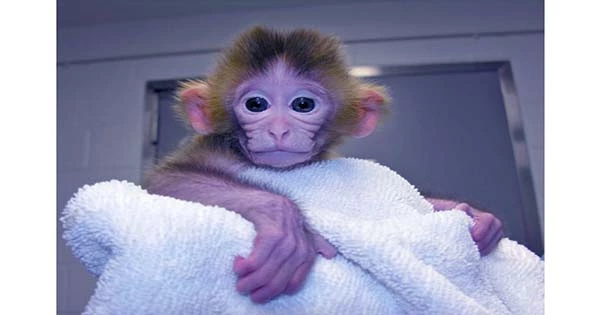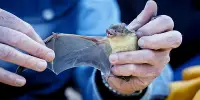A team of scientists took seven-day-old monkey embryo stem cells and injected them into an unrelated four-to-five-day embryo from the same species, which was then implanted into a female monkey, in what sounds like the opening moments of a sci-fi horror film. The female monkey later gave birth to a fully grown boy, marking the first live birth of a chimera non-human primate in the world.
While scientists have used this procedure to make both monkey-human embryos (which were aborted before further development) and living persons, this is the first time that the inserted genetic material has made up such a large percentage of the newborn’s tissue composition. The implanted stem cells generated 92% of the monkey’s brain tissue and 67% of the animal’s total makeup.
“This is a long-sought goal in the field,” stated Chinese Academy of Sciences (CAS) senior author Zhen Liu. “This work could help us to generate more precise monkey models for studying neurological diseases as well as for other biomedicine studies.”

Scientists were astounded not only by the birth but also by the unprecedented contribution of embryonic stem cells to fetal growth. Green fluorescent protein was used to stain pluripotent cells – or cells with the ability to differentiate into all the numerous types required to ‘construct’ such an animal – in order to determine how much of this genetic material was contributing to the monkey’s growth.
The young cynomolgus macaque (Macaca fascicularis) showed discrete areas of fluorescence across its body after birth, even at its fingertips and eyes, according to scientists. Gene sequencing and other testing revealed that these donor stem cells were present in 26 different types of tissue, accounting for between 21% and 92% of that tissue.
The injected stem cells generated an average of 67% of tissue, which was found in the brain, heart, kidneys, liver, gastrointestinal system, testes, and other organs.
“We have a very high level of contribution, with donor cells forming a big part of the tissues (and) complex structures all over the monkey body,” said Professor Mu-Ming Poo, scientific head of CAS’s Institute of Neuroscience.
Unfortunately, the infant monkey only lasted for 10 days before succumbing to respiratory failure and hypothermia and was killed. The precise origin of this degradation is unknown, but Liu believes it may have been caused by epigenetic variations between cell types.
Naturally, ‘Frankenstein’ing’ creatures to create sentient animals for human purpose has sparked severe ethical concerns and remains a contentious topic of scientific research. A chimera is a single creature formed from two or more sources of cells with distinct genetic origins.
This is in contrast to a clone, which is a genetically identical replica of another organism. When monozygotic twinning happens in nature, as a result of an embryo dividing after fertilization, identical twins are a type of cloning.
There is a lot of interest in developing viable chimera creatures in order to grow human organs for transplant and learn more about how human diseases work. The researchers also discuss the possibility of interspecies chimeric animals saving critically endangered species from extinction.
“This work could help us generate more precise monkey models for studying neurological diseases and other biomedicine studies,” said Liu Zhen, senior author of the paper published by the Chinese Academy of Sciences (CAS).
Previously, scientists primarily created chimeric rodents. Nonetheless, because of our close relationship with primates, monkeys are regarded as a valuable source of information about human physiology and disease.
“Because their physiology is so different from ours, mice don’t reproduce many aspects of human disease,” said senior study author Zhen Liu. “In contrast, human and monkey are close evolutionary, so human diseases can be more faithfully modeled in monkeys.”
















